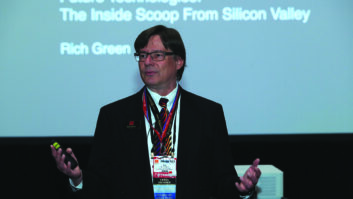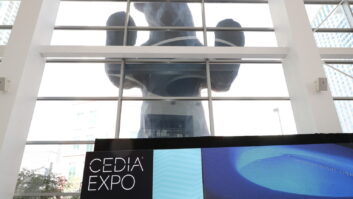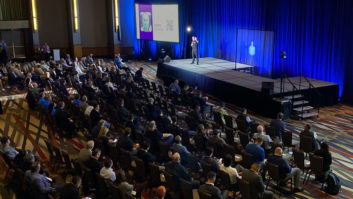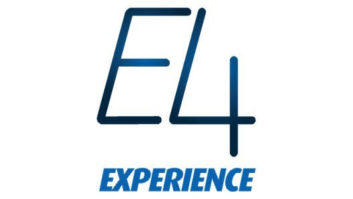At this point, I think it is safe to say we’ve all gotten somewhat used to virtual meetings. We can ride the mute button like pros, switch off the camera for a quick bite of that lunch we just couldn’t get to, and figure out what kind of light makes us look the least ghoulish. All those skills are essential for our continued remote business meetings, but when it comes to virtual tradeshows, more has to be done if you hope to get any real benefits from them.
Fortunately, there is plenty of advice to be had, with many blogs written on the subject since the country went into quarantine. For the most part, they share the same wisdom: treat the virtual event the same as you would an in-person one. That means turn your “out of office” on and limit your distractions for the duration of the show. Most1 also advise in participating in whatever feedback means are possible, whether it be chat windows during sessions or happy hours at the end of the day.
Thomas J. Tobin covered the topic for The Chronicle of Higher Education, and he recommended sharing the moments as they happen. He writes, “Two things make ideas stick when you’re in a conference session: taking notes and talking with other people during and right afterward. Before the meeting, find out the special conference- and session-specific hashtags. Then follow and use them. Tweet, post, and chat in the primary and side channels for the conference.”
Exhibitor Views
A virtual tradeshow does have its upside — for one thing, it allows for a greater audience, bringing in people who have been unable to make it to the physical show. It also removes the overpriced, barely edible convention center food and levels the playing field for exhibitors who don’t have the grand physical presence of a large booth at the show.
Of course, that’s a downside for ones who do, like, for example SnapAV, which has a commanding presence at CEDIA Expo each year. “Certainly, capturing attention and standing out is an even greater challenge in a virtual environment,” says GPaul Hess, EVP of marketing and category management, SnapAV. “On the show floor, there are limited distractions, and if an attendee has chosen to take time to attend, they’ve committed to being engaged with the opportunities the show presents. However, in a virtual show, exhibitors and events are competing with everything else someone might have going on in the day — work demands, home demands, family demands, and so on. Essentially, there’s a lot of noise you have to rise above in order to be heard.
“Therefore, exhibitors have to create content that’s easily consumable, highly engaging, and offers flexibility for those to participate when it’s convenient for them. Exhibitors also have to work a lot harder to drive attendees; they can no longer rely on passersby wandering in from the show floor. Standing out has never been more critical!”
In addition to exhibiting at tradeshows, SnapAV also hosts them. With its recently announced Snap Pro Live, the company promises virtual and local in-store sessions that include keynotes on industry trends, new product introductions, partner breakouts, unique virtual training, and pro networking opportunities to forge new relationships and strengthen existing ones.
A key component to both the virtual CEDIA Expo exhibit and Snap Pro Live will be product demonstrations, which are challenging in the virtual world. “We believe that creating a ‘hands on’ component that generates interactions between demonstrators and attendees better connects attendees to content,” says Hess. “While traditional webinar-style training is still incredibly valuable for product education, finding new and different ways to present the same message can deliver greater impact. We at SnapAV already have experience doing this. For example, our PCNA Certification has always been a virtual experience that integrates hands-on learning for individual attendees. And, most recently, we created a virtual version of our Control4 Automation Programmer Certification, which enables techs to connect remotely to student racks so they can configure equipment and test their systems, learn Composer, and gain the skills they need to get certified without having to leave home.”
Here to Stay
A hybrid event such as Snap Pro Live provides the best of both worlds — the larger scope of virtual with the hands-on experience of in-person. And that’s probably the way it is going to stay, even on that wonderful day when this pandemic is far off in our rear-view mirrors.
“Fortunately, going virtual makes events accessible to a broader audience, which can help boost overall attendance and reach,” concludes Hess. “As such, we believe that virtual events are here to stay — at least in the near term — as they continue to allow companies to meaningfully connect with their customers from a distance.
“However, we do believe, and have heard from our dealer partners, that the desire for in-person events is not going away. Being able to connect with each other in person, touch and feel products, and interact spontaneously in real-time, creates a dynamic that is not easily recreated in a virtual environment.”
Virtual Tradeshow Calendar
- CEDIA Expo: September 15-17, 2020; cediaexpo.com
- Crestron NXT: September 15-16, 2020; Crestron.com/next
- Snap Pro Live: Date TBD; snapav.com/shop/en/snapav/snap-pro-live
This article originally ran on residentialsystems.com.













